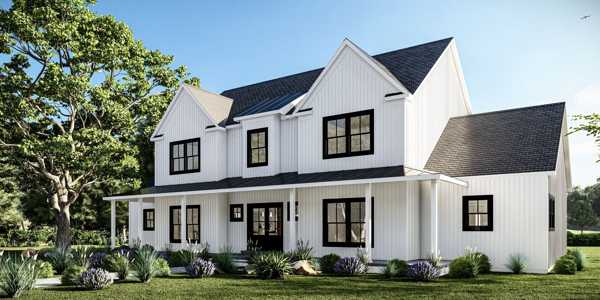How to Purchase a Modular Home: Step-by-Step Guide for Future Homeowners
Modular homes get their name from the fact that sections of the home are built in a factory. They are then brought to the build site and pieced together with the rest of the home.This article will highlight the stages in the purchasing and building process of modular homes.
Modular homes derive their name from their unique construction process where substantial sections are prefabricated in a controlled factory environment. These modules are then transported to the designated site and skillfully assembled, seamlessly integrating with the rest of the structure. This comprehensive article will explore and elucidate the various phases involved in the purchasing and construction journey of modular homes.

Acquire Land and Plan Future Needs
The initial and fundamental step towards building a modular home is acquiring a suitable plot of land. In making this decision, it's crucial to align the land purchase with the intended size and design of your future home. Moreover, it's important to consider long-term plans, such as potential family expansion or the inclusion of additional spaces like in-law suites. Planning for extra space ensures that you can accommodate future needs while maximizing the utility of the land you invest in.
Thorough Research and Builder Selection
The next key phase involves undertaking thorough research to select the most suitable modular home builder. This includes identifying the specific style and design preferences for your future home and reaching out to builders who have expertise in those design categories. It's beneficial to tour model homes presented by various builders, which provides a tangible sense of what your completed home could resemble. Collecting multiple price quotations can aid in making an informed decision that aligns with your financial plan.
Implications of Budget Considerations
When formulating a budget, numerous factors need consideration to avoid unforeseen expenses. The installation of basic utilities such as electricity, gas, and sewer connections to your building site can significantly impact costs. Additionally, opting for premium materials like granite countertops, expanded basements, deluxe garages, or intricate architectural details like crown molding could substantially escalate the budget. Factoring in potential energy-efficient upgrades at the onset ensures a comprehensively prepared budget.
Navigating Financing Options
Financing for modular homes deviates from traditional mortgage procedures. You may initially require a construction loan, which covers land acquisition and builder fees if immediate funds aren't available. This construction loan can later transition into a standard home mortgage after the construction is completed. This transitional financing facilitates the smooth financial flow required for modular home construction.
Advantages of Choosing Modular Homes
Opting for a modular home comes with distinctive advantages. The factory-built components reduce construction delays, enhancing reliability, as mentioned by Max Real Estate Exposure. Modular homes are constructed under stringent quality control measures, ensuring higher quality outputs. Builders might offer flexible financing solutions, streamlining the loan process. Homeowners also enjoy increased customization options and the ability to incorporate eco-friendly and energy-saving features due to the airtight construction. Fresh Home highlights their potential for superior energy efficiency, contributing to sustainable living.








